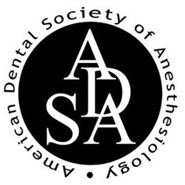 Dental bridges close the gap left by missing teeth. Many types of dental bridges are anchored by real teeth, dental crowns, or dental implants. No matter the type, they can effectively restore a patient’s smile and chewing ability. But like any dental restoration, bridges have their pros and cons.
Dental bridges close the gap left by missing teeth. Many types of dental bridges are anchored by real teeth, dental crowns, or dental implants. No matter the type, they can effectively restore a patient’s smile and chewing ability. But like any dental restoration, bridges have their pros and cons.
Dental bridges: An overview
Before diving into the pros and cons of dental bridges, it is important to understand what this restoration involves. Bridges are artificial teeth (pontics) cemented into the mouth. As mentioned, the mechanism that secures them in the mouth determines the type. Dental crowns secure traditional dental bridges on either end, while cantilever bridges are supported by only one crown. Maryland bridges are secured using metal wings cemented to the backs of the teeth. Lastly, implant-supported bridges are, as their name implies, secured using dental implants (artificial tooth roots).
A dentist will look at the number of missing teeth and their location when selecting a bridge for a patient. They will also consider the patient’s age, oral health, and preferences.
Pros of dental bridges
Each type of dental bridge has its own unique pros. For example, Maryland bridges are great for replacing missing front teeth, while implant-supported bridges are durable enough to replace missing molars. That said, all bridges share certain benefits, such as the following:
- Affordable: They are more cost-effective than replacing each tooth with implants alone.
- Permanent: They are a permanent restoration that lasts for five to 15 years and does not need to be removed.
- Look like natural teeth: Pontics look just like real teeth, so most people will not know the difference.
- Feel and function like natural teeth: Chewing, speaking, and caring for bridges will be the same as with natural teeth.
- Prevent misalignment of surrounding teeth: Bridges take up space to prevent other teeth from shifting into misalignment.
Cons of dental bridges
Dental bridges have some cons that patients should consider. A common one is that poor oral hygiene creates an opportunity for dental decay and gum disease. While the bridge itself cannot decay, the abutments may fracture or fail as a result. To prevent this, make it a point to practice good oral hygiene every day.
Bridges also do not prevent jawbone loss because the pontics are not rooted in the jawbone, leaving it disengaged. If too much bone density is lost, a sunken facial appearance and tooth loss can result.
When to consider bridges as a restoration
Patients who are missing multiple teeth in a row or front teeth may benefit from dental bridges. While they have their drawbacks, their benefits cannot be overlooked. Bridges are an affordable, permanent, and natural-looking solution to missing teeth.
Learn more today
A general dentist can help patients make an informed decision about whether dental bridges are right for them. They can also discuss the different types of bridges in more detail. To learn more about this tooth replacement option, call 305-230-4484 for a consultation appointment.
Request an appointment or call Feel Good Dentistry at 305-230-4484 for an appointment in our Miami office.
Related Posts
Dental bridges and implants are two effective, natural-looking ways to replace missing teeth. Bridges are often best for replacing multiple teeth, while implants can replace one or several teeth. However, it is not always an either-or situation. Using bridges and implants together can restore a patient’s smile to its full function. For many, it comes…
A dental bridge is a restoration that relies on dental crowns and a short or larger row of artificial prosthetic teeth. It is completely customized to each patient so as to ensure a snug fit. Dental bridges have become one of the most popular ways to replace teeth that are missing as they help restore…
Replacing your tooth after it is lost prevents many problems in the future. Fortunately, modern dentistry allows easy access to tooth replacement options, including the dental bridge. Acquiring this appliance is simple enough, typically requiring only two appointments to complete your smile and get you back on track.After selecting the ideal type of dental bridge…




